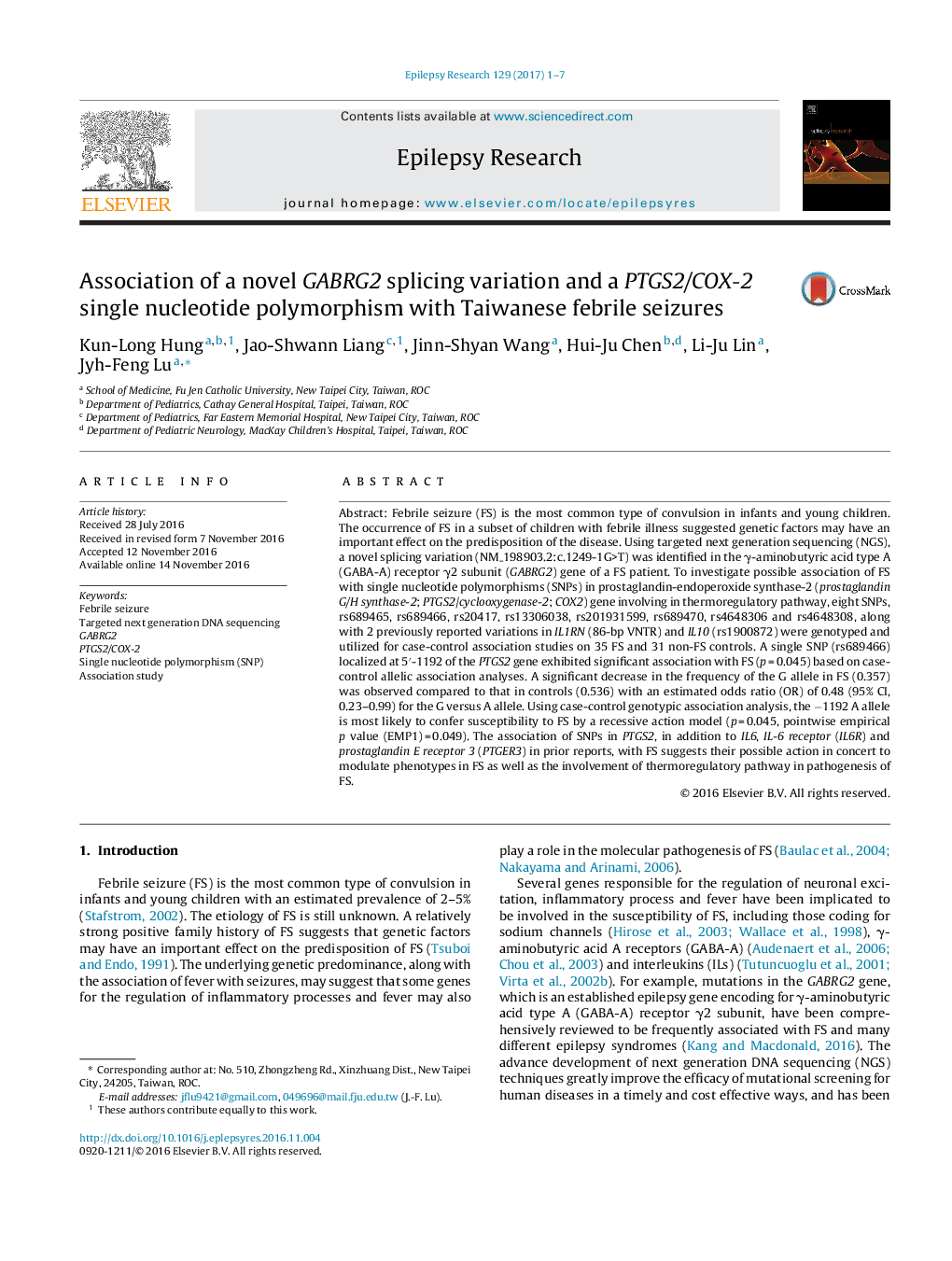| Article ID | Journal | Published Year | Pages | File Type |
|---|---|---|---|---|
| 5628765 | Epilepsy Research | 2017 | 7 Pages |
â¢Association of a novel splicing variation (c.1249-1G > T) in GABRG2 with FS.â¢PTGS2 SNP (rs689466; â1192A) exhibits linkage disequilibrium with FS.â¢PTGS2 â1192A allele may confer susceptibility to FS in a recessive mode.
Abstract: Febrile seizure (FS) is the most common type of convulsion in infants and young children. The occurrence of FS in a subset of children with febrile illness suggested genetic factors may have an important effect on the predisposition of the disease. Using targeted next generation sequencing (NGS), a novel splicing variation (NM_198903.2:c.1249-1G>T) was identified in the γ-aminobutyric acid type A (GABA-A) receptor γ2 subunit (GABRG2) gene of a FS patient. To investigate possible association of FS with single nucleotide polymorphisms (SNPs) in prostaglandin-endoperoxide synthase-2 (prostaglandin G/H synthase-2; PTGS2/cyclooxygenase-2; COX2) gene involving in thermoregulatory pathway, eight SNPs, rs689465, rs689466, rs20417, rs13306038, rs201931599, rs689470, rs4648306 and rs4648308, along with 2 previously reported variations in IL1RN (86-bp VNTR) and IL10 (rs1900872) were genotyped and utilized for case-control association studies on 35 FS and 31 non-FS controls. A single SNP (rs689466) localized at 5â²-1192 of the PTGS2 gene exhibited significant association with FS (p = 0.045) based on case-control allelic association analyses. A significant decrease in the frequency of the G allele in FS (0.357) was observed compared to that in controls (0.536) with an estimated odds ratio (OR) of 0.48 (95% CI, 0.23-0.99) for the G versus A allele. Using case-control genotypic association analysis, the â1192 A allele is most likely to confer susceptibility to FS by a recessive action model (p = 0.045, pointwise empirical p value (EMP1) = 0.049). The association of SNPs in PTGS2, in addition to IL6, IL-6 receptor (IL6R) and prostaglandin E receptor 3 (PTGER3) in prior reports, with FS suggests their possible action in concert to modulate phenotypes in FS as well as the involvement of thermoregulatory pathway in pathogenesis of FS.
